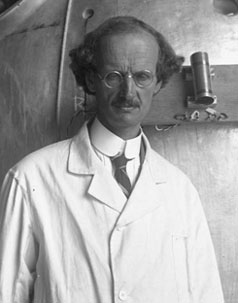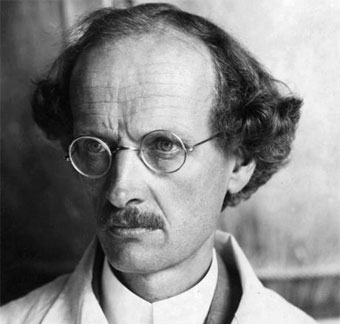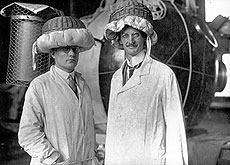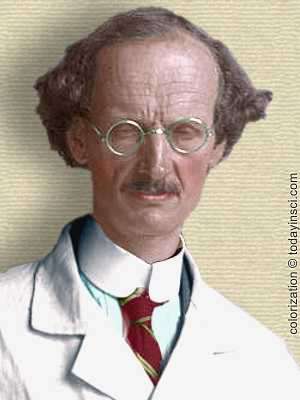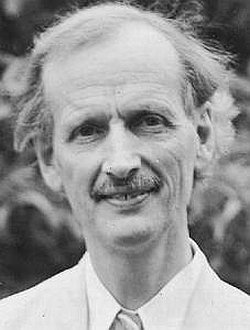Auguste Piccard
Auguste Piccard ( born January 28, 1884 in Basel, † March 24, 1962 in Lausanne) was a Swiss scientist, physicist ( experimental physics) and inventor. He is the twin brother of the chemist Jean -Felix Piccard and father of Jacques Piccard.
Life
Piccard laid in 1910 with a degree in Mechanical Engineering at the Polytechnic in Zurich (later the ETH ) from 1913 she received her doctorate. 1915 Piccard became private in 1917 he became Professor of Mechanics and from 1920 for physics at the ETH. 1922 he was appointed to the University of Brussels, where Piccard taught until his retirement in 1954. In addition to his pioneering experiments, Piccard Stratosphere deal with atomic physics. He predicted the existence of a third element of the uranium group, which he called Actinuran. When it was officially discovered in 1937 by Arthur Jeffrey Dempster was given the name Uranium 235 Among other Piccard designed the then most accurate seismograph.
Stratospheric research
Started from Augsburg, presented Piccard and his assistant Paul Kipfer on May 27, 1931 aboard the FNRS -1 a balloon altitude record of 15,785 m.
An important motivation for Piccard's ascent into the upper atmosphere had the opportunity there to measure cosmic radiation. Piccard wanted to collect experimental evidence for the theories of his friend Albert Einstein. Einstein had studied how Piccard at ETH. They met on the legendary fifth Solvay Conference in 1927, which brought together all the time important physicists of the theory of relativity, atomic and quantum physics. The balloon flights from Piccard were theoretically prepared in collaboration with Albert Einstein, and could actually prove a part of the special theory of relativity successfully experimentally.
On August 18, 1932 Auguste Piccard increased with the Belgian physicist Max Cosyns for the second time with a gas balloon, this time in Dübendorf, Switzerland. They presented with 16,940 meters ( geometric measurement, barometric 16,201 meters) set a new world record, which was later increased to 23,000 m.
After the Second World War he developed the bathyscaphe ( FNRS -2 and Trieste), a type of submarine for deep sea exploration. On September 30, 1953 Piccard made by the Trieste, a new record, as in the Tyrrhenian Sea, accompanied by his son Jacques Piccard, dived to a depth of 3,150 meters it. The aim of this dive was the exploration of the deep-sea life.
After the Mesoskaph Piccard Auguste Piccard (PX -8) is named that appeared at the Swiss National Exhibition in Lausanne in 1964 with tourists in the Lake Geneva.
Piccard as a literary figure
Auguste Piccard is the inspiration for the character Professor Calculus (French Professor Tournesol, Eng. Professor Calculus ) in the comic Tintin. The young Hergé had Piccard met as a student in Brussels, where the Swiss professor knew every child with his impressive body size and its distinctive appearance ( wild hair, stiff collar). While the fictional Professor Calculus is flown with a home-made nuclear rocket to the moon, the real Piccard has described plans for moon flight as a "dangerous utopia " shortly before his death Wernher von Braun. You may also Adrian Leverkiihn story goes on an underwater expedition in Doctor Faustus back on reports of Piccard's experiments.
Piccard's stratosphere flight of 1931, which ended with an emergency landing on Gurgler Furthermore, the topic of Norbert Gstrein amendment O2 from the year 1993.


